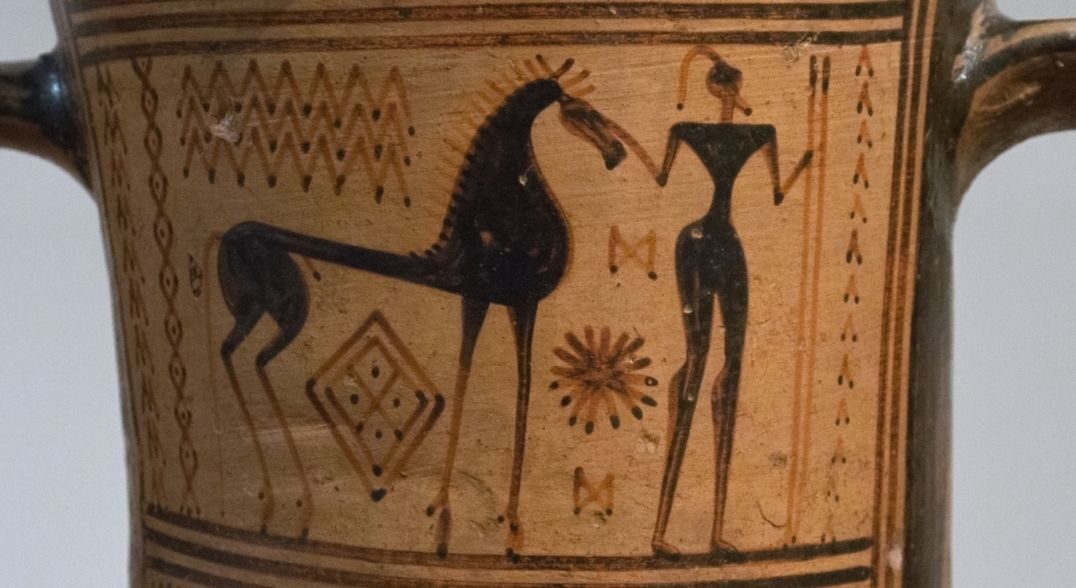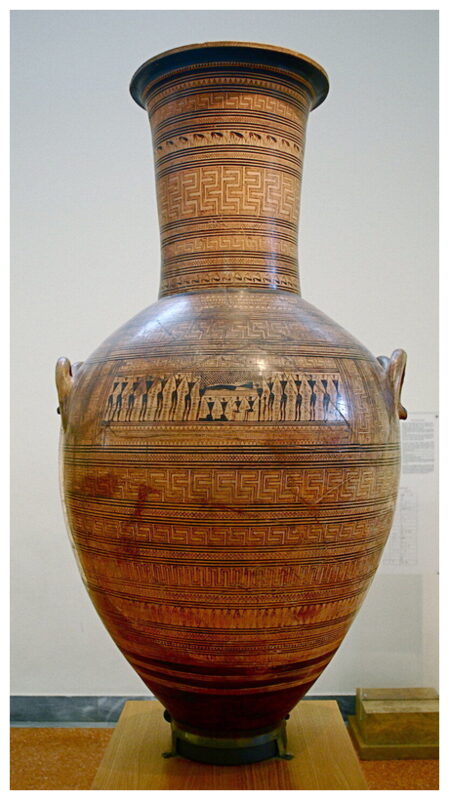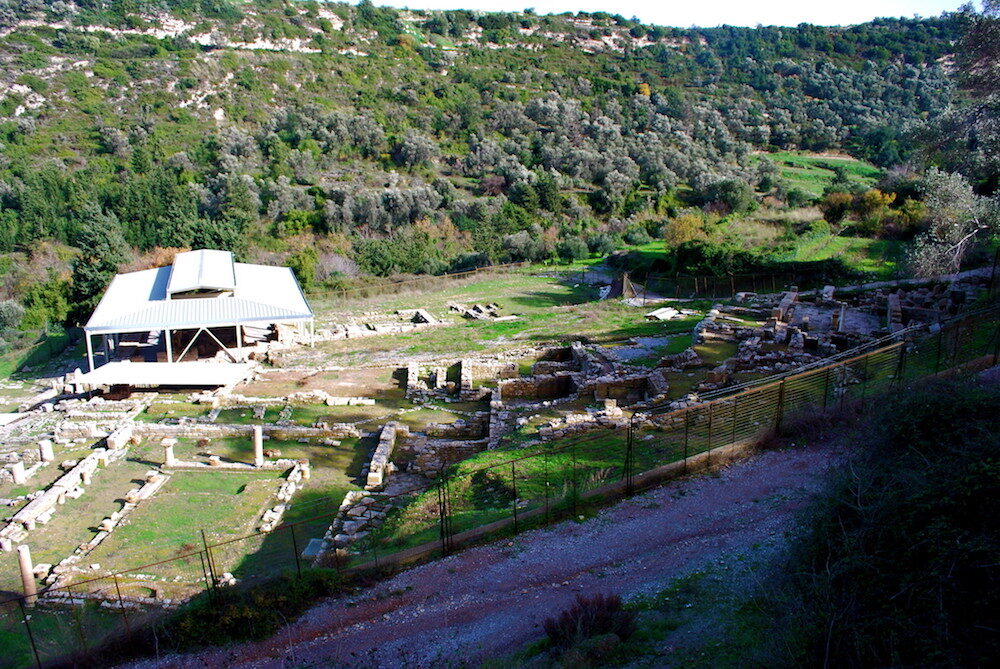
The roughly 5-foot-tall amphora is one of many painted vases credited to a so-called Dipylon Master. (Dipylon is the name of the cemetery gate near where people found this vessel.) Historians have assumed that this master was a man. In fact, the assumption has long been that male artisans crafted the iconic pottery of ancient Greek society throughout its history.
After all, ancient Greece isn't exactly known for its record of women's rights and contributions. In Politics about 2,400 years ago, Aristotle wrote, "the male is by nature superior and the female inferior."
"No one had really thought that women were involved in making this pottery," says Sarah Murray, a classical archaeologist at the University of Toronto. "There was no argument. It was just taken as the default."
But in a recent article published in the American Journal of Archaeology, Murray and two of her undergraduate students challenge those assumptions. They argue that women were primarily responsible for the ceramics in at least one significant era of ancient Greek history.
Their analysis reframes archaeological questions about gender and paints a more cohesive picture of life during one of the most mysterious periods of ancient Greece. It also speaks to a larger effort underway in human history research: questioning how modern biases have skewed understandings of the past.

Scholars have believed that these ceramics were made by men because the historical record and classical texts paint a picture of a male-dominated society throughout various periods of Greek history. But Murray and her colleagues disagree with that analysis.
For one, they argue that gender roles may have shifted in the Early Iron Age period. They base this argument in part on historical evidence that the period was so economically and politically distinct from the preceding Bronze Age's lavish palaces, and the subsequent Archaic period's increased population and social complexity.
In contrast, the Early Iron Age evidence points to a drop in population. According to Murray, when societies have a lot of land and few people, women tend to lead pottery production.
Murray and her colleagues also point to the ceramics' paintings as evidence for their theory. The period's pottery is defined by an abrupt shift to geometric patterns on vases, like those on the Dipylon amphora.
Scholars have traditionally described those patterns as one stage in the artistic evolution of Greek men. Murray and her students make an entirely different case: This shift to geometric art on pottery suggests a connection to weaving. "The fact that the style seems to be inspired by textiles is kind of like the big, blaring horn," she says. "Women are almost always the weavers."
Funeral scenes on pottery also hint at women's contributions. Even in many of ancient Greek society's stories that have men as their protagonists, women play a large role in funeral rituals. They prepared bodies for burial, led processions, and even mourned professionally — a tradition that has continued up to recent years. Women's and children's graves from the period include a variety of ceramics, far more so than men's graves. Unlike Archaic vases covered in war scenes, and epic warrior poems from this era, most Early Iron Age pots captured the world of Greek women.
Building on many such strands of evidence, Murray and her colleagues argue that women could have been the true potter-artisans of this society. "By itself, I don't think [certain evidence] would be a slam dunk case," says Julie Hruby, a classicist at Dartmouth College. "But I think when you put all of these together, you get a much stronger case."
Hruby, who describes Murray and her students' paper as "extraordinarily well-reasoned," is in the process of using fingerprints to shed further light on Greek potters.
In conventional fingerprint analyses, archaeologists examine ceramics for the impression of fingerprints and then take measurements of the ridges within prints. Many scholars believe it is possible to associate the depth and density of finger ridges with specific ages and sexes. Hruby is developing a new computational method for analyzing prints. "I would be surprised if I found fingerprint evidence that refuted what was in [their] article," Hruby adds.

Murray is not alone in asking this question. John Kantner, an anthropologist at the University of North Florida recently showed, along with his colleagues, that despite long-held beliefs that women were the potters in the U.S. Southwest's Puebloan society, fingerprint analysis suggests both men and women crafted pottery. "It's pretty clear when you look at all of these cases around the world, there is no intrinsically gendered activity," Kantner says.
Kent Fowler, an anthropologist at the University of Manitoba who studies ceramics of different cultures and periods, makes a similar point, "Gender is not binary [now], and it's not binary in the past either." A challenge facing scholars, then, is how to overcome their own society's ideas about gender so as not to let them influence their interpretations.
Though Fowler feels drawing conclusions about gender from weaving styles is a somewhat tenuous approach, he loves Murray's "out-of-the-mold" thinking. He adds that her paper stimulates new questions and broadens ideas about what data are relevant, which can mean "potentially even changing how fieldwork is done, right from the beginning."



Reader Comments
Throwing enough clay on a wheel to make a five foot tall urn with double wall thickness is not an easy task for a anyone. especially a woman (whom is born with less body mass and thus usable force).
Maybe the urn makers were males who identified as female?
to sum it up, who really gives a shit anyways?